Travel is making a comeback. After a busy summer season, the tug-of-war between pent-up demand and COVID-hued uncertainty continues. So, what is on the horizon for travelers as 2021 nears an end? To find out, we surveyed 3,570 VacationRenter users from around the globe and asked them to reveal their 2022 trip-planning details, from length-of-stay to budgets.
Here are the resulting five travel trends we’re seeing as we look toward 2022.
Lengthy Stays Aren’t Going Away
During the heart of the pandemic, remote work options opened the door to relatively lengthy stays away from home. That trend may explain why almost a third of survey respondents (32.4%) say they plan to stay in a short-term rental for more than three weeks in 2022. While work-from-anywhere flexibility may account for part of that group, there’s also been an uptick in folks using rentals of three weeks or more to “try out” destinations before relocating — some may call it “new hometown shopping.” Young professionals and retirees alike are booking stays of four-to-six weeks (or longer) in a variety of locales to see which one is a good fit before committing to home purchase or lease. With 67.6% of survey respondents saying they do not plan long-term stays for 2022, traditional vacationing seems to be on tap for 2022 as well.
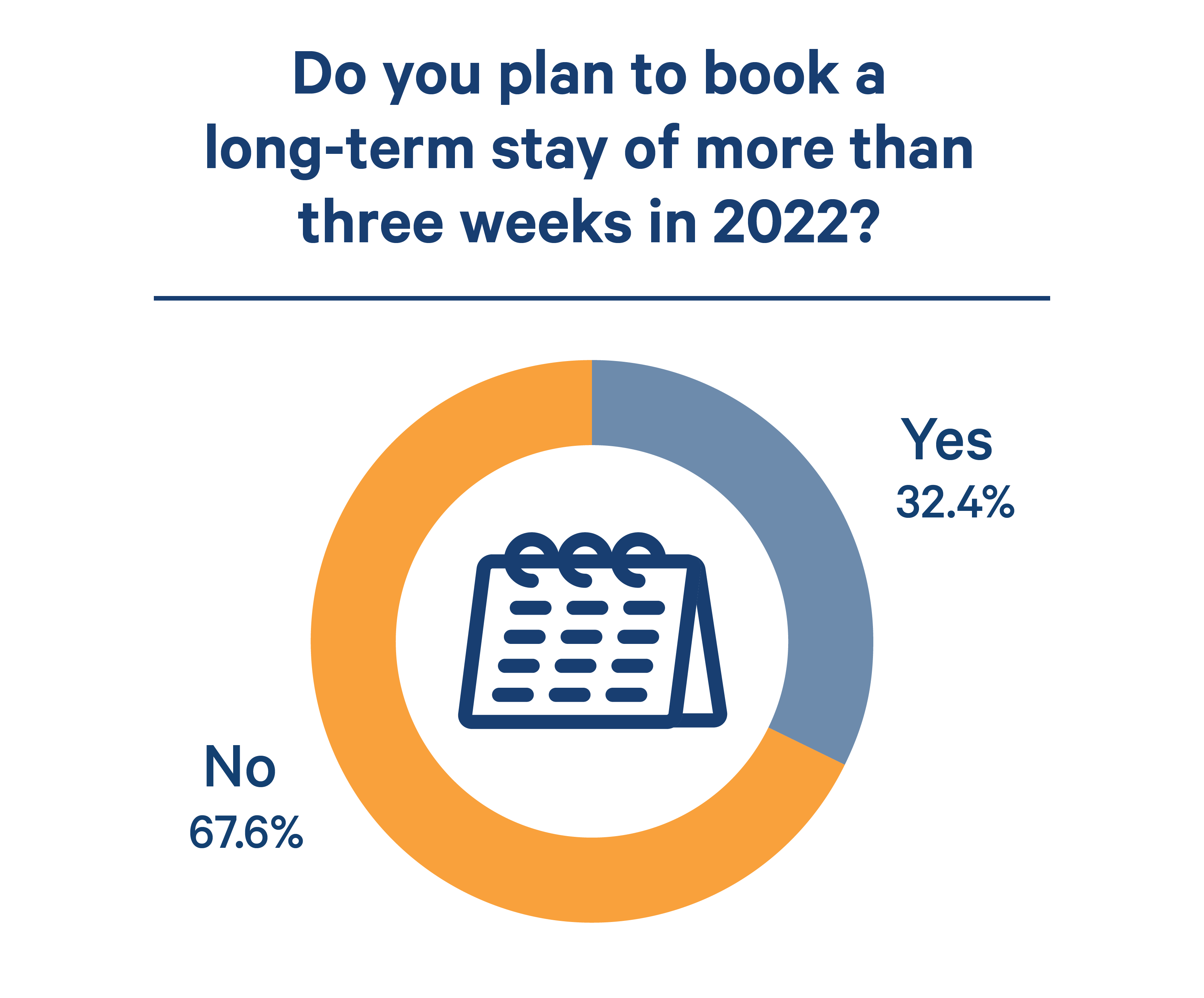
Making Up for Lost Time
Pent-up demand continues to be a factor in travel as we approach a new year. However, the frequency of vacationing for 2022 varies significantly.
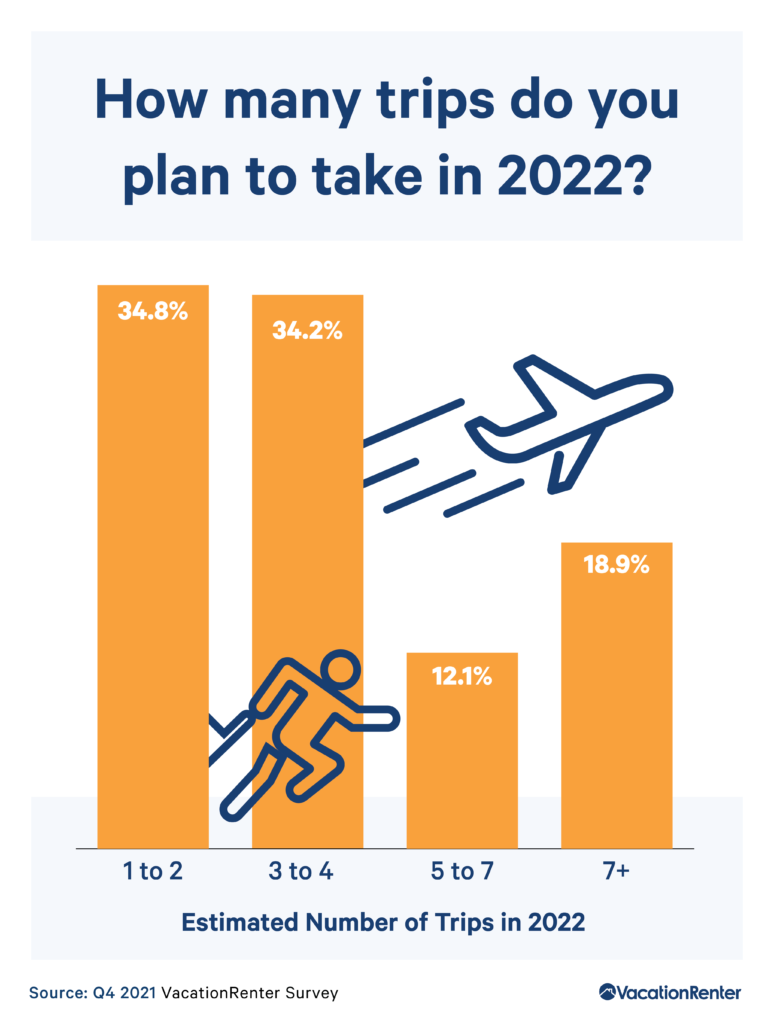
On the more conservative side of the equation, 34.8% of respondents indicated that they would be taking one to two trips; and 34.2% said they would embark on three to four trips throughout the year. The former may indicate a return to traditional, annual, week-long sojourns. The latter may suggest a handful of shorter getaways, rather than one chunk of time away. Conversely, 18.9% of those surveyed said that they would take seven or more trips in 2022 and the remaining 12.1% planned to take five to seven trips. Those folks planning frequent trips could once again fall into a category of hybrid workers with flexibility in terms of remote options. Or, that avid-traveler group may represent a population ready to make up for two years of saved-up vacations and travel dreams.
Last-Minute Weekenders
When asked how far in advance they plan to book a weekend getaway, 40.6% of respondents said they would book within seven days or less of departure. This last-minute travel trend corresponds with what we’ve seen in recent summer booking trends, and may indicate folks are hesitant to book ahead due to cancellation fees or lingering pandemic fears of shutdowns. People may also be motivated by mother-nature-timed splendor, such as a fresh snowfall or a vibrant, wildflower bloom.
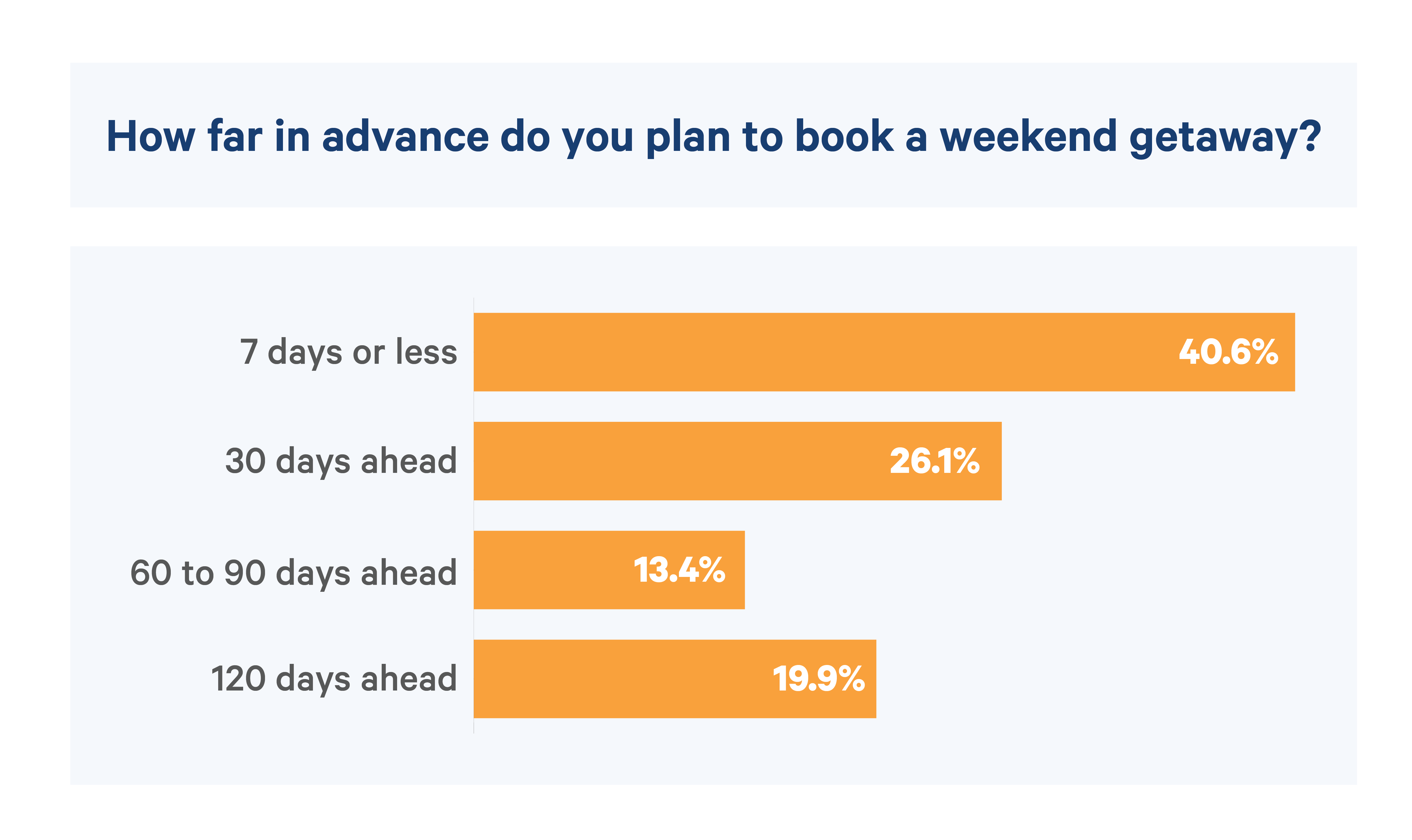
With uncertain and ever-changing travel conditions, some people are opting to plan ahead. Our categories of lead-time fell into respondents wanting to plan 30 days (26.1%), 60 to 90 days (13.4%), as well as those looking to make plans more than three months in advance (19.9%). Various factors may come into play, such as coordinating a large group or lack of flexible vacation time.
Going Beyond the Border?
Given that travel advisories and temporarily closed borders have thwarted dream vacations and family reunions over the past two years, we asked our users if they plan to travel abroad in 2022. The survey results were almost an equal split: 52.3% plan to travel abroad, while 47.7% say they will not leave their home country.
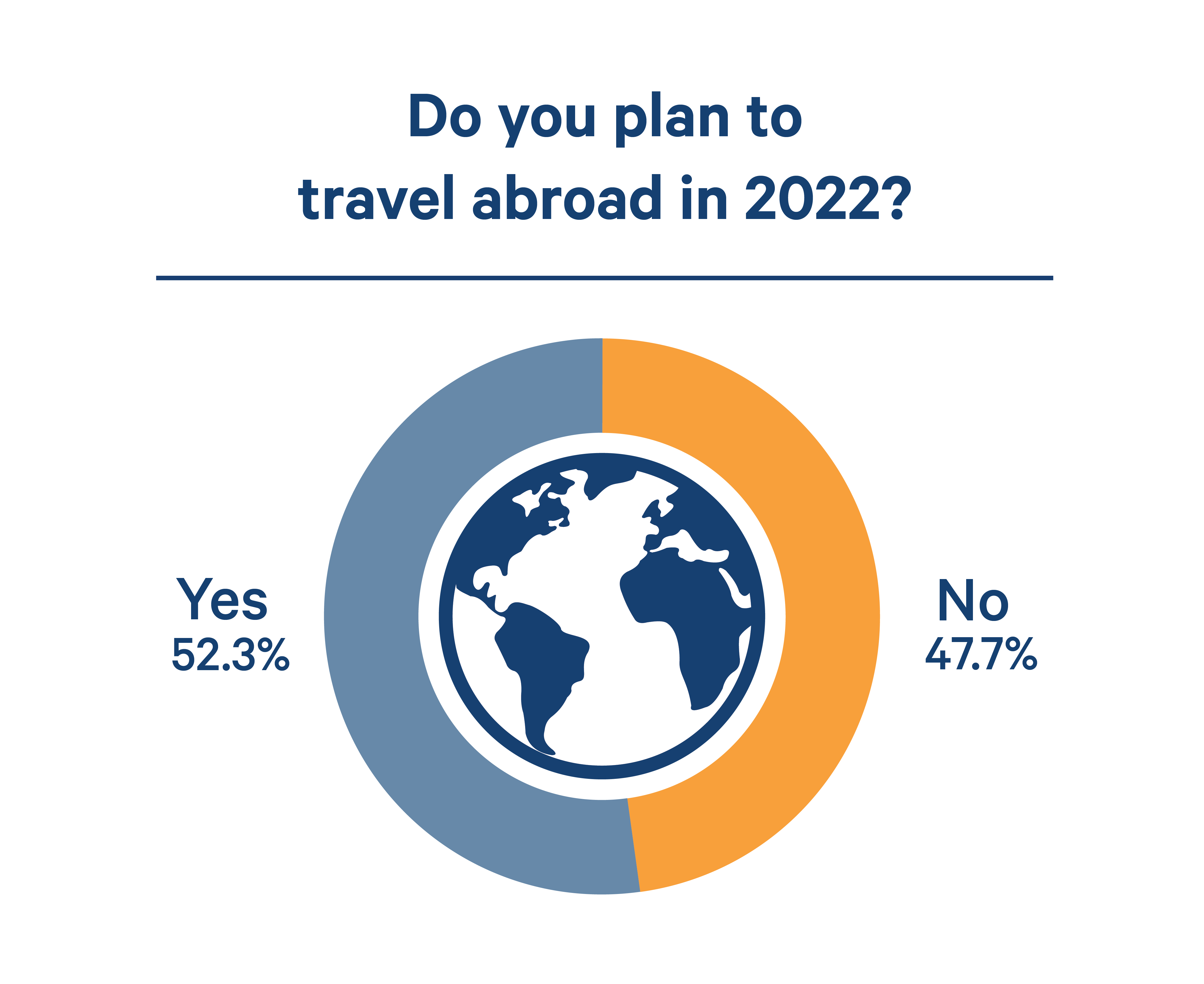
Those planning international travel may be encouraged by the reopening of borders around the world and increased vaccination rates as well as a demand for long-overdue reunions with loved ones. For those hesitant to travel abroad, the reasoning is likely similar to what we heard in our 2020 survey, where 51% of respondents indicated “sense of safety” as a top priority in returning to travel.
Time to Crack the Piggy Bank Open
When last we surveyed folks about how much they plan to save and spend on their post-pandemic travels, 81% of respondents said they had stashed away an average of $1,582 for future travel. This time around, our respondents anticipate spending an average of $2,197* on each vacation. The US Travel Council also predicts increased spending in 2022, projecting a 22.6% increase in travel spending from 2021 to 2022. This growth in planned spending either means people saved their pennies during the pandemic lockdown, or they feel more optimistic about future cash flow.
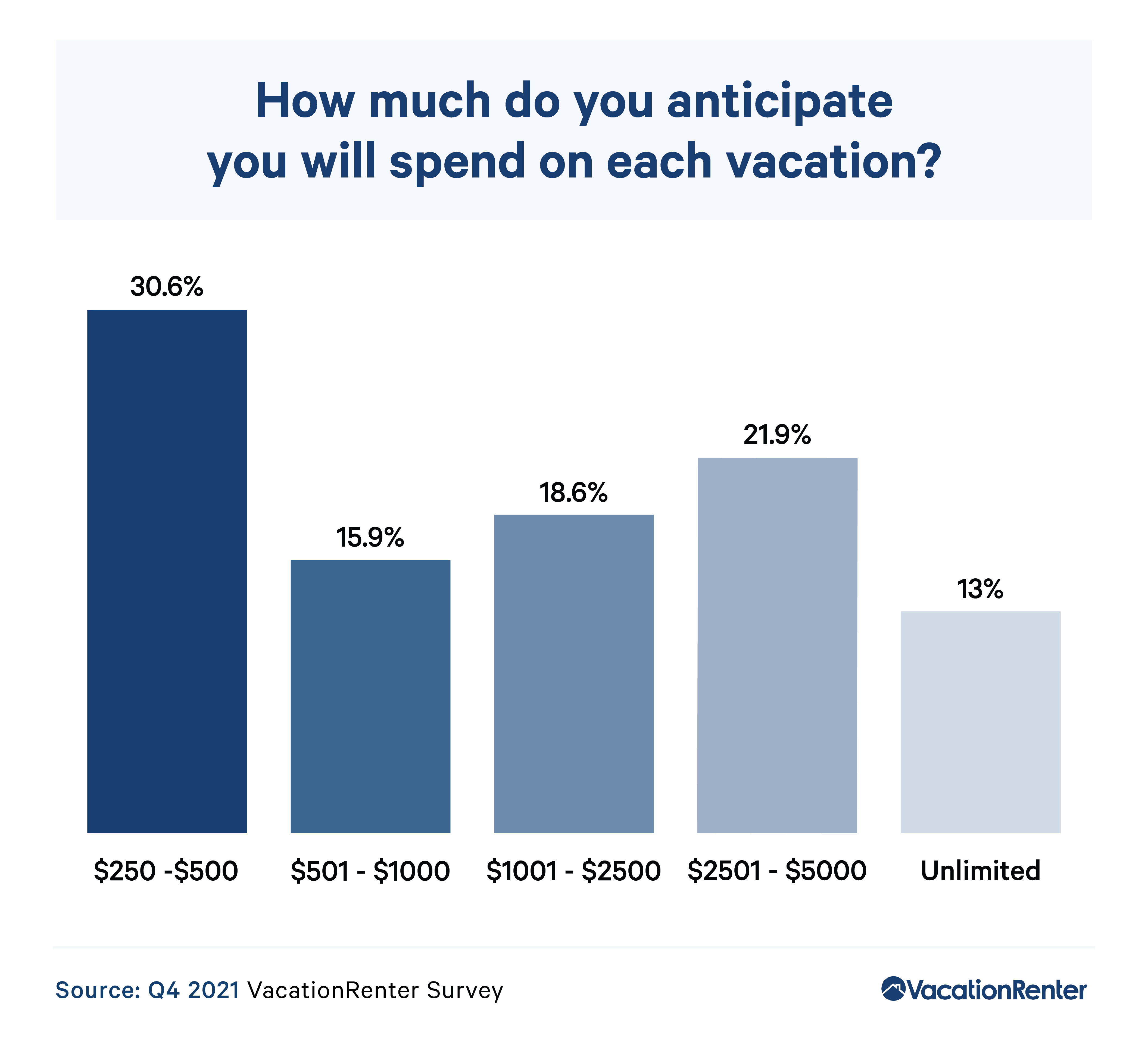
The overall breakdown of our survey results shows that nearly a third of respondents (30.6%) plan to spend $250 to $500 per vacation. That relatively modest budget may reflect concerns about income, given the shaky job market, or it could indicate that respondents plan to take several trips within a larger annual travel budget. The remaining 69.4% of respondents reported anticipating a loosening of the purse strings for 2022 getaways. The middle tiers of anticipated travel budgets broke down to $501 to $1,000 (15.9% of respondents), $1,001 to $2,500 (18.6% of respondents), and $2,501 to $5000 (21.9% of respondents). On the significantly pent-up demand side of the equation, people who anticipated an “unlimited budget” per trip made up 13% of those surveyed.
Methodology and Limitations
We conducted a survey of 2,118 VacationRenter users from around the world and asked them to answer questions about their travel plans for 2022. The data are not weighted and are based on self-reporting. With self-reported data, there are limitations, such as the over- or underreporting of information as well as exaggerated numbers and answers.
*We reached this survey’s overall, anticipated spending average by taking the low-range weighted average ($1,539) and the high-end range average ($2,845) and averaging the two to arrive at $2,197. We calculated “unlimited” as $7,500.
Fair Use Statement
If you think a friend or family member would enjoy our findings on travel trends for 2022, please feel free to share it for non-commercial purposes. All we ask is that you give us credit by linking back to our study.